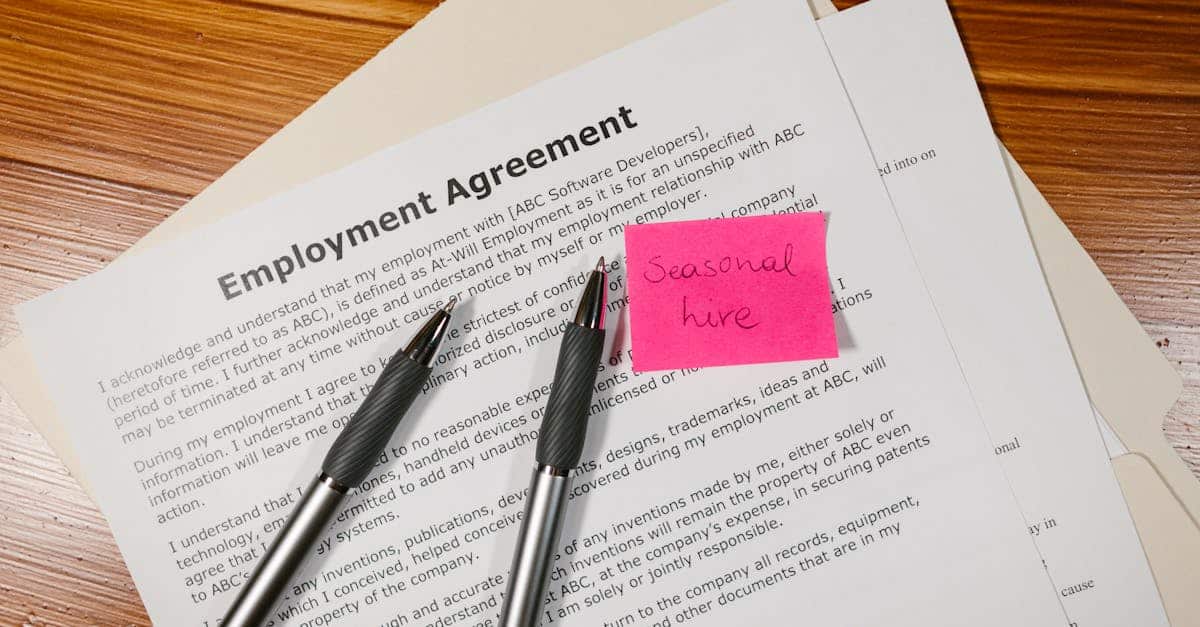
Introduction
Cut hiring delays and risky assumptions. Lengthy, phone‑based reference checks stall offers, introduce bias, and leave little defensible evidence—exactly the problems HR and legal teams feel most acutely as hiring volumes and compliance scrutiny increase. Asynchronous reference checking powered by smart forms, e‑sign, and verification workflows removes calendar friction, surfaces written, auditable evidence, and speeds decisions without sacrificing rigor. Using a modern form builder lets you collect multiple referees in parallel, prefill candidate details, and prompt for attachments or signatures to reduce back‑and‑forth.
Document automation does the heavy lifting. Conditional file uploads, OTP or ID verification, timestamped e‑signatures, automatic routing and red‑flag triggers turn scattered responses into defensible records that accelerate offers. Below, we walk through practical form design and mobile tips, secure identity and consent capture, automated evidence collection, rules‑based escalation, and a reusable template playbook so you can scale trusted reference checks across hiring workflows.
Why asynchronous reference checks cut time‑to‑hire and improve candidate accuracy
Asynchronous reference checks remove calendar friction and let referees respond on their schedule, which shortens the overall reference-check timeline.
Using an online form builder or form creator lets you collect multiple references in parallel instead of waiting for sequential phone calls. That parallelism typically reduces time-to-hire by days or weeks in fast-moving searches.
Accuracy and quality gains
Asynchronous forms reduce interviewer bias and improve accuracy because responses are written and auditable. Referees have time to consult records and attach evidence (e.g., performance notes or sample deliverables), producing more reliable evidence than short phone calls.
Audit trails and timestamped submissions from modern form builder software also help compliance and reduce disputes later in the hiring process.
Designing reference check forms that maximize completion rates (short, mobile friendly, incentive tips)
Keep forms short and scannable. Limit open-text fields to essential prompts and use multiple choice or rating scales for the rest. Aim for a 3–5 minute completion time.
Mobile-first and accessible design
Most referees will use a phone. Use a responsive form builder online or form builder app and test on small screens. Clearly show progress and a time-to-complete estimate.
Conversion-boosting elements
- Prefill known data (candidate name, role, dates) to reduce friction.
- Use progress indicators and only show conditional follow-ups when relevant.
- Offer incentives sparingly (e.g., small gift card raffle) and communicate how long the survey will take.
These are practical form design best practices—similar principles apply when choosing a google forms alternative, form builder wordpress plugin or a lightweight form builder free tier.
Secure identity verification and consent capture workflows for referees
Capture consent explicitly and store it with the response. A simple checkbox linked to your consent text is the minimum; better is an electronic signature or attestation field tied to the respondent’s email and IP address.
Identity verification options
- One-time passcodes sent to the referee’s phone or email (OTP).
- Document upload with automated redaction for IDs.
- Third-party KBA or ID-verification APIs for high-risk roles.
Whichever method you choose, record verification metadata (timestamp, IP, verification method) in the form entry. That metadata turns a plain submission into a defensible, auditable record for compliance and background checks.
Use secure data collection forms from reputable form builder software that supports TLS, field-level encryption, and role-based access controls to meet HR and legal requirements.
Automating evidence collection: transcripts, recommendation letters, and signed attestations
Build workflows that automatically request and attach supporting documents when referees indicate relevant items. For example, if a referee cites a performance rating, trigger a prompt to upload a supporting document.
Common automation patterns
- Email follow-ups with prefilled links to the original form when attachments are late.
- Conditional file upload fields for transcripts, sample work, or recommendation letters.
- Integrated e-signatures for signed attestations that lock the response.
Use templates for standard evidence. For recommendation letters you can link a ready-to-send template: https://formtify.app/set/recommendation-letter-4qvuv. Automating collection reduces back-and-forth and accelerates the hiring decision.
These automations are easy to implement with a modern form creator or form builder online and are more reliable than manual email exchanges.
Routing and red flag triggers: auto‑escalation for inconsistencies and follow‑up rules
Implement a rules engine to score responses and identify red flags automatically (e.g., conflicting employment dates, low competency ratings, or blank mandatory fields).
Practical routing rules
- Score thresholds: if a referee gives a score below X, auto-route the response to the hiring manager and compliance lead.
- Inconsistency detection: flag mismatches between referee answers and candidate-provided data and queue for human review.
- Escalation windows: if a referee doesn’t respond within your SLA, automatically send reminders and then escalate to a backup referee or recruiter after N days.
Pair routing with form analytics and tracking so you can measure response rates, time-to-complete, and which questions trigger escalations. This is where an advanced form builder or form builder software that supports webhooks and integrations adds real value over simple survey tools.
Template playbook: reusable reference forms, signed attestations and offer handoffs
Create a small library of reusable templates to standardize collection and speed handoffs to offers and employment paperwork.
Essential templates
- Short reference check form (3–5 minutes) with rating scales and a conditional file upload.
- Signed attestation template for verification of dates/positions (e-signature enabled).
- Recommendation letter request template — use or adapt this one: https://formtify.app/set/recommendation-letter-4qvuv.
- Offer handoff form that packages verified references with the offer letter and employment agreement — link your templates here: https://formtify.app/set/job-offer-letter-74g61 and https://formtify.app/set/employment-agreement-mdok9.
Operational tips:
- Version controls: Tag templates with version and review date.
- Field reuse: Use the same field IDs across templates so integrations (ATS, HRIS) map cleanly.
- Integration checklist: Connect your form builder to email, e-sign, ATS, and cloud storage. Consider a google forms alternative or enterprise form builder wordpress plugin if you need tighter control and branding.
These playbooks work whether you’re using a free form builder free tier for pilots or investing in paid form builder software that supports webhooks, the form builder plugin ecosystem, or a full form builder with payment capability where required.
Summary
Asynchronous reference checks combined with smart forms, e‑signatures, and verification workflows reduce calendar friction, produce written, auditable evidence, and speed hiring decisions without sacrificing compliance. Practical form design (short, mobile‑first), secure identity capture (OTP, ID uploads, timestamped attestations) and rules‑based automation (conditional uploads, red‑flag routing) turn scattered responses into defensible records HR and legal teams can rely on. Document automation removes manual work and standardizes evidence collection so you can scale trusted reference checks efficiently; use a form builder to put these practices into production. Ready to get started? Explore templates and workflows at https://formtify.app
FAQs
What is a form builder?
A form builder is an online tool that lets you create, distribute, and collect responses from web forms without coding. It typically includes templates, conditional logic, file uploads, and integrations that help you automate tasks like reference checks and evidence collection.
How much does a form builder cost?
Costs range from free tiers for basic use to monthly or annual subscriptions for advanced features like e‑sign, identity verification, and enterprise security. Pricing usually depends on number of responses, features (e.g., webhooks, analytics), and whether you need custom branding or SLA support.
Can I accept payments with a form builder?
Yes—many form builders support payment integrations through Stripe, PayPal, or built‑in processors so you can collect fees or donations directly in a form. If you accept payments, ensure the provider is PCI‑compliant and that payment data is handled securely.
Is there a free form builder?
There are free form builders and free tiers offered by many vendors, which are useful for pilots and small projects. Free plans often limit responses, file storage, or premium features like e‑signatures and advanced security, so evaluate needs before scaling.
How do I embed a form builder on my website?
Most builders provide an embed snippet—typically an iframe or JavaScript widget—that you paste into your site’s HTML or CMS block. Test responsiveness and prefill capabilities, and ensure the embedded form works on mobile and behind your site’s authentication if required.





